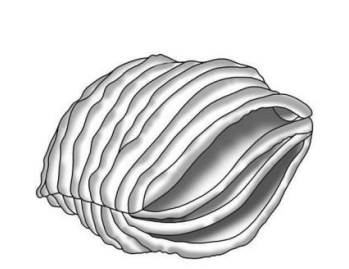Newsletter
Draft Amendment to the "Examination Guidelines on Non-Traditional Trademarks" Announced by the Taiwan Intellectual Property Office
Paragraph 4, Article 30 of the Trademark Act was amended and came into force on May 1, 2024. In conjunction with this amendment, Item 10, Article 12 and Paragraph 2, Article 13 of the Enforcement Rules of the Trademark Act were also amended. The main focus of this amendment is to regulate the functional parts included in trademark designs.
According to the rationale for the amendment, functional parts within a trademark design, for public interest reasons, cannot obtain registration rights through use and do not constitute part of the trademark. Therefore, when assessing the likelihood of confusion, such functional parts should not be considered as part of the overall trademark design. If the functional part can be visually represented, it should be depicted with dotted lines; if it cannot be represented by dotted lines (such as non-visual elements like sound or scent), a clear declaration that the part is not part of the trademark must be made. Otherwise, the trademark application will be refused registration. The relevant amended provisions are as follows:
1. The Trademark Act, Article 30, Paragraph 4 provides: "Where the trademark representation includes functional elements referred to in Subparagraph 1, Paragraph 1, and such elements are not presented in dotted lines, the application shall be refused. If the elements cannot be presented in dotted lines and no declaration is made to state that such elements are not part of the trademark, the application shall likewise be refused."
2. Enforcement Rules of the Trademark Act, Article 12, Subparagraph 10 provides: "An application for trademark registration shall be filed with an application form indicating the type and format of the trademark, and shall include the following items: (10) If the circumstances under Paragraph 3 of Article 29 or Paragraph 4 of Article 30 of the Act apply, a declaration of disclaimer or that the element is not part of the trademark shall be made."
3. Enforcement Rules of the Trademark Act, Article 13, Paragraph 2 provides: "Trademark representations may use dotted lines to illustrate the manner, position, functional parts, or other visual aspects of how the trademark is used in connection with the designated goods or services. Such dotted line portions shall not be deemed part of the trademark."
In line with these amendments, on June 23, 2025, the Taiwan Intellectual Property Office (TIPO) published a draft amendment to the Examination Guidelines on Non-Traditional Trademarks. The amendment adjusts the examination standards based on Paragraph 4, Article 30 of the Trademark Act and its enforcement rules. The draft also includes several newly added case examples. Below are key points and case summaries from the draft worth noting:
1. Trademark Design (Section 2.1.1 of the Draft Guidelines)
The distinctive features of non-traditional trademarks generally include colors, 3D shapes, motion, holograms, and sounds. For 3D trademarks, the distinctive feature lies in the overall commercial impression formed by the spatial configuration (length, width, and height) of the product itself or its packaging.
Applicants must clearly express what constitutes the protectable subject matter of the 3D trademark. If only text, graphics, or symbols are presented using dotted lines on specific parts of a product, or if the applicant disclaims the shape portion, the TIPO will notify the applicant to make necessary corrections or advise them to apply for a traditional 2D trademark instead.
2. Trademark Description (Section 3.2.2 of the Draft Guidelines)
To clarify the shape and configuration of a 3D trademark for the designated goods or services, the applicant must provide a detailed trademark description explaining the 3D shape and any additional components. If the application covers multiple classes of goods or services, the shape configuration for each class must be individually described.
3. Distinctiveness of Product Shape as a 3D Trademark (Section 3.2.3 of the Draft Guidelines)
In practice, the following factors will be considered in determining the distinctiveness of a product shape as a 3D trademark:
(1) Whether the shape is a basic or commonly used design in the relevant industry, and whether it is sufficiently distinctive to create a separate commercial impression. If commonly used in the trade, it will be considered non-distinctive.
(2) Whether average consumers would perceive the product shape as an indicator of source. If the shape merely serves a functional or decorative purpose, it typically lacks inherent distinctiveness—even if the shape differs from conventional designs in the market.
(3) The TIPO introduced new case examples in this draft to illustrate its strict standards in assessing distinctiveness of product shapes. For instance:
|
Trademark Design / Application No. |
TIPO's Explanation |
|
|
The 3D trademark consists solely of a "turtle-shell-shaped cookie" and is designated for goods such as "crackers, cookies, grain-based snack chips." According to consumer perception, the shape represents the appearance of the product itself, not an identification of source, and no acquired distinctiveness was demonstrated. The application was refused under Subparagraph 1, Paragraph 1, Article 29 of the Trademark Act. |
|
|
The 3D trademark consists solely of the actual appearance of a lemon tart with light yellow cream piped into a rose pattern and is designated for goods in Class 30 such as "lemon tarts." The piping technique is a common decorative method in the pastry industry, often referred to as "rose lemon tart." The design is seen by consumers as product decoration rather than source identification, and therefore lacks distinctiveness. The application was refused under Subparagraph 3, Paragraph 1, Article 29 of the Trademark Act. |
The TIPO is accepting public comments on the draft until July 10, 2025, and will announce the effective date of the final version of the Examination Guidelines on Non-Traditional Trademarks in due course.


 Application No.: 110077416
Application No.: 110077416 Application No.: 109921528
Application No.: 109921528